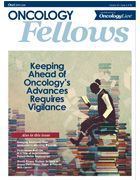Publication
Article
Steady Increase in Liver Cancer Death Rates Observed in Adults Aged 25 and Older
Author(s):
A National Center for Health Statistics briefing showed that liver cancer death rates increased significantly for both sexes, with death rates for men 2 to 2.5 times the rate for women from 2000 through 2016.
Jiaquan Xu, MD

Jiaquan Xu, MD
A National Center for Health Statistics (NCHS) briefing stratifies liver cancer mortality by sex, ethnicity, and age for adults aged 25 years and over. Overall, death rates increased significantly for both sexes, with death rates for men 2 to 2.5 times the rate for women from 2000 through 2016. The news for non-Hispanic white, non-Hispanic black, and Hispanic adults is not good, either, with increased liver cancer death rates reported for these populations. However, liver cancer deaths declined for non-Hispanic Asian or Pacific Island (API) adults during the same time period.1,2
Specifically, liver cancer death rates for adults aged 25 and over increased 43%, from 7.2 per 100,000 US standard population in 2000 to 10.3 in 2016. Age-adjusted death rates for liver cancer increased 43% for men (from 10.5 to 15.0 per 100,000) and 40% for women (from 4.5 to 6.3) (Figure 1). When ethnicity was considered, the age-adjusted death rate increased for non-Hispanic white, non-Hispanic black, and Hispanic adults but decreased for non-Hispanic API adults (Figure 2).
When particular age groups are stratified, Jiaquan Xu, MD, author of the data brief, said that among patients aged 55 to 64 years, liver cancer death rates rose from 2000 through 2013. Since 2013, the rate remained stable until 2016, the last year that records were available.
“If we look at the age group [of] 45 to 54 [years] from 2000 to 2005, the rate has increased, but from 2005 through 2012, the rate has remained stable. Further, since 2012, it has decreased by about 20%. That looks like a good sign for the younger age group,” said Xu, an epidemiologist at NCHS.
Figure 1. Age-adjusted Death Rates for Liver Cancer Among Adults Aged 25 and Over, By Sex: United States, 2000-2016
For adults aged 65 to 74, the rate increased 7% from 2000 to 2008 (from 18.7 to 20.0 per 100,000) and 37% from 2008 to 2016 (from 20.0 to 27.3). The 2000-2016 rate increased 35% (from 29.8 to 40.2) for adults aged 75 and over. The liver cancer death rate was the highest for adults aged 75 and older, followed by age groups 65 to 74, 55 to 64, 45 to 54, and 25 to 44 years.
Although the non-Hispanic API group had the highest liver cancer death rates during 2000 to 2014, among the 4 races and Hispanic-origin groups, this group experienced the only decrease (22%), from 17.5 in 2000 to 13.6 in 2016. For Hispanic adults, the liver cancer death rate increased 27%, from 11.5 in 2000 to 14.6 in 2016, surpassing the rate for non-Hispanic API adults that year.
Figure 2. Age-Adjusted Death Rates for Liver Cancer Among Adults Aged 25 and Older, by Race and Ethnicity: United States, 2000-2016
In 2016, Washington, DC, had the highest age-adjusted liver cancer death rate (16.8 per 100,000 US standard population), and Vermont (6.0) had the lowest rate. “When we look at liver cancer among non-Hispanic blacks, the death rate for liver cancer seems to be rising. Given the population of the Washington, DC, area, that could be 1 of the factors that led to the higher rate,” Xu said.
Behind Washington, DC, age-adjusted death rates for liver cancer among adults were highest in Louisiana (13.8), Hawaii (12.7), and Mississippi and New Mexico (12.4 each) in 2016. The 5 states with the lowest age-adjusted liver cancer death rates were Vermont, Maine (7.4), Montana (7.7), and Utah and Nebraska (7.8 each).
References
- Xu J, Murphy SL, Kochanek KD, Bastian BA. Deaths: Final Data for 2013. Natl Vital Stat Rep. 2016 Feb 16;64(2):1-119.
- Xu J. Trends in liver cancer mortality among adults aged 25 and over in the United States, 2000-2016. NCHS Data Brief. 2018;(314):1-8.









